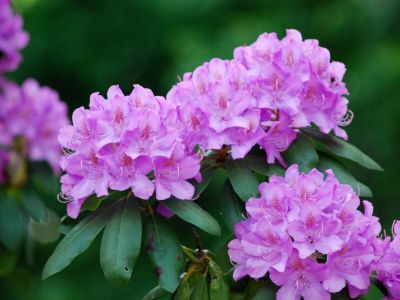When to Feed a Rhododendron
If your soil is fertile and your plants look happy, there’s no urgency to learn about feeding rhododendrons. No fertilizer is always better than too much fertilizer so you might do best leaving healthy plants alone. Be wary of nitrogen deficiencies, however, if you mulch with fresh sawdust or wood chips. As these materials disintegrate into the soil, they use up available nitrogen. If you see your rhododendron growth slowing and the leaves turning yellow, you’ll need to start fertilizing rhododendron bushes with a nitrogen fertilizer. Take care when applying nitrogen fertilizer. If you live in a cold climate, don’t add nitrogen after early summer since it can produce lush, new growth easily damaged in winter. Apply only what you need and no more, since excess fertilizer burns a plant’s roots.
How to Fertilize Rhododendrons
If your garden soil isn’t particularly rich or fertile, rhododendron fertilizer will help keep the plants healthy. Generally, shrubs require three major nutrients to thrive, nitrogen (N), phosphorus (P), and potassium (K). Rhododendron fertilizer will have the proportions of these listed on its label in this order: N-P-K. Unless you know that your soil is deficient in one nutrient but not the other two, choose a complete fertilizer containing all three ingredients, like one with “10-8-6” on the label. You may notice some fertilizers in the garden store specifically for azaleas and rhododendrons. These specialty fertilizers are formulated with ammonium sulfate to acidify the soil at the same time as providing nitrogen. If your soil is naturally acid, no need to buy these expensive specialty products to feed your rhodies. Just using a complete fertilizer should do the trick. Granular fertilizers are less expensive than other types. You just sprinkle the amount specified on the label on the top of the soil around each plant and water it in. It’s easy to figure out when to feed a rhododendron. You can start fertilizing rhododendron bushes at planting time, and do it again in early spring as flower buds swell. Use a light hand, since applying too much rhododendron fertilizer can do more harm than good. Sprinkle more on very lightly at leaf emergence if the new leaves look pale.
